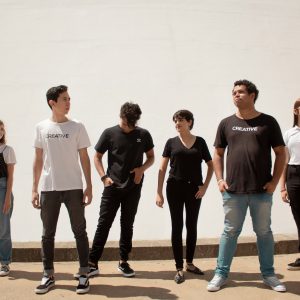 View Winners →
View Winners → Monthly Feature: Nearby ‘Dark Skies’


Amateur astronomers watch the night sky. – Photo courtesy Halfblue (CC BY-SA 3.0)
By Roshan Perera
A strange occurrence happened on the night of the 1994 Northridge Earthquake. As documented by various local emergency centers, people were calling in to report a strange silvery cloud in the sky. What they were seeing, for the first time in their lives, was our galaxy, the Milky Way.
Because the earthquake had temporarily shut down the power grid, there was no light pollution to block out the stars that many of us never get to see.
A study released by the journal Science Advances estimates that nearly 80 percent of Americans can no longer see a clear night sky due to light pollution. Those of us living in the San Gabriel Valley are no exception.
Within the large metropolis we live in, we are constantly shrouded by the soft orange glow of street lights, or the crisp blue LEDs of our bus and train stations. However, we are lucky enough to live relatively near a few dark sky sites.
A dark sky sight is an area that is free from the light pollution that a city emits. It means that the light coming off of a city never passes the horizon and you have a near perfect view of what the night sky would look like.
There are two dark sky sites in our region. The first is Joshua Tree National Park. It is a mostly dark sky site. There is still a light bit of residual light pollution that comes from the Palm Desert area, but the major city lights from Los Angeles and San Diego cannot be seen. The second area is Death Valley National Park. This is a complete black sky sight, meaning that no artificial lights will obstruct or haze up your views of the night sky.
In recognition of Great Outdoors (GO) Month, it might be a great outing to go visit one of these National Parks see the sky in all its natural glory. Both of these sites are approximately three hours away and can be easily accessed from major highways.
Joshua Tree also has numerous campsites, hiking trails, rock climbing and bouldering spots.
Death Valley is a bit further north, and more isolated from larger cities, but is still offers camping and hiking. But, it is advisable to not make Death Valley your first outdoor hiking and camping experience. It has its name for a reason!
There are hotels and tour groups that operate out of Stovepipe Wells within Death Valley that offer more comfortable amenities for those that want to experience the dark sky.
(If you have been to either one of these places and would like to share some of the photos you have taken with us, we would love to showcase them on our website along with this article. This is one natural wonder some of us may never be able to see, except in pictures).







































































































